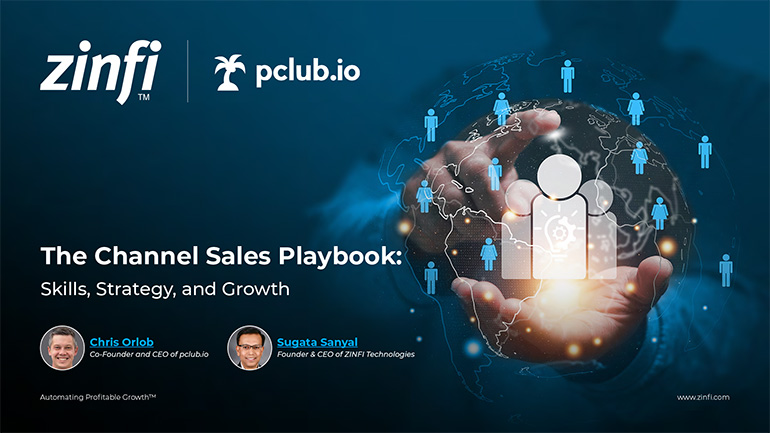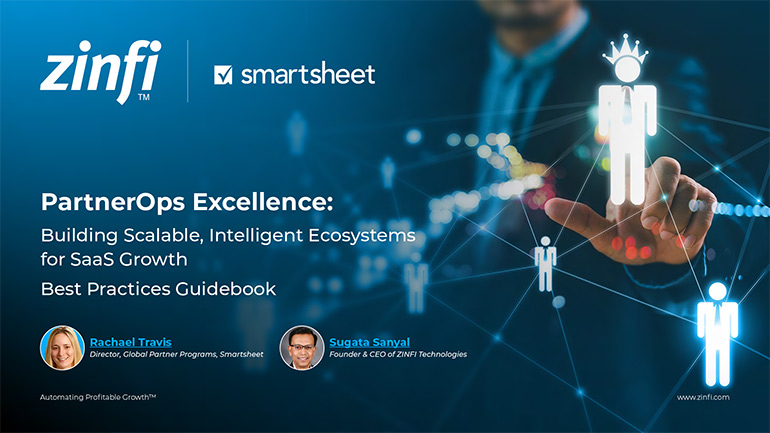Glossary - What is - Partner Profiling
What is Partner Profiling?
Partner profiling is a process used to evaluate and categorize business partners based on various criteria, such as their capabilities, performance, and strategic alignment with an organization. This assessment helps businesses identify the most suitable partners, ensuring that the partnerships formed are beneficial and aligned with business goals. Partner profiling involves collecting and analyzing data on potential and existing partners, which may include financial stability, market reach, technological expertise, and past performance.
Partner profiling is crucial in partner ecosystem management and partner management automation. It enables organizations to systematically evaluate partners using automated tools and platforms, facilitating efficient and objective decision-making. Automated partner profiling can streamline onboarding, enhance partner relationships, and optimize resource allocation by identifying partners most likely to succeed and contribute to the organization’s objectives.
Key Takeaways:
- Enhanced Partner Selection: Partner profiling allows organizations to make informed decisions when selecting partners. By evaluating potential partners against specific criteria, businesses can identify those that align best with their strategic goals. This ensures that partnerships are formed with entities with the capability and resources to deliver value. For more on how partner profiling enhances partner selection, visit ZINFI Partner Relationship Management.
- Improved Partner Onboarding: With a clear profile of each partner, the onboarding process becomes more efficient. Organizations can tailor their onboarding programs to meet each partner’s needs and strengths, ensuring a smooth integration into the ecosystem. This targeted approach helps reduce onboarding time and increase partner engagement. Learn more about effective onboarding strategies at ZINFI Partner Onboarding.
- Optimized Resource Allocation: Partner profiling helps allocate resources more effectively. By understanding each partner’s strengths and weaknesses, businesses can direct support and resources where they are most needed, maximizing the impact of their partner programs.
- Enhanced Performance Monitoring: Regular profiling and assessment of partners enable continuous performance monitoring. Organizations can track key performance indicators and identify areas for improvement, ensuring that partners remain productive and aligned with business objectives.
- Strategic Partner Development: Profiling helps develop long-term strategic partner relationships. By understanding their capabilities and growth potential, businesses can collaborate on initiatives that drive mutual growth and innovation. This fosters a collaborative environment where both parties work towards shared goals.
Summary of Key Takeaways:
Partner profiling is a critical tool in partner ecosystem management, enabling organizations to select the right partners, streamline onboarding, allocate resources efficiently, monitor performance, and foster strategic development. By leveraging automated tools, businesses can make data-driven decisions, enhancing the overall effectiveness of their partner programs and driving mutual growth and success.
Key Examples:
- Automotive Manufacturing: In the automotive industry, partner profiling helps manufacturers identify suppliers with the necessary technological expertise and reliability to ensure high-quality production. For example, a manufacturer may profile potential partners based on their experience with electric vehicle components, ensuring they collaborate with those who can meet stringent quality standards and innovate in this rapidly evolving market.
- Consumer Electronics: Consumer electronics companies use partner profiling to evaluate distributors and retailers who can effectively market and sell their products. By assessing market reach, sales performance, and customer service capabilities, these companies can choose partners to enhance their market presence and drive sales growth.
- Energy Production: Partner profiling selects contractors and suppliers who can contribute to sustainable and efficient energy production in the energy sector. Profiling criteria might include technological capabilities, environmental compliance, and past project performance, helping energy companies form partnerships that support their sustainability goals and operational efficiency.
- Financial Services: Financial institutions leverage partner profiling to identify fintech companies and other technology partners who can enhance their service offerings. By evaluating partners based on innovation capabilities, regulatory compliance, and market reputation, financial services firms can form alliances that drive digital transformation and improve customer experiences.
- Food and Beverage: The food and beverage industry uses partner profiling to choose suppliers and distributors who can ensure product quality and safety. Criteria such as food safety certifications, supply chain reliability, and market reach are crucial for forming partnerships that support brand integrity and customer satisfaction.
- Healthcare Services: In healthcare, partner profiling helps organizations select service providers and technology vendors who can enhance patient care and operational efficiency. Profiling factors might include clinical expertise, technology integration capabilities, and compliance with healthcare regulations, ensuring partnerships that improve healthcare delivery.
- Information Technology: IT companies use partner profiling to identify VARs (Value-Added Resellers) and MSPs (Managed Service Providers) who can effectively sell and support their solutions. Criteria such as technical expertise, market reach, and customer service capabilities are essential for forming partnerships that drive product adoption and customer success.
- Pharmaceutical Development: Pharmaceutical companies leverage partner profiling to choose research partners and contract manufacturers who can support drug development and production. Profiling criteria might include research expertise, regulatory compliance, and production capabilities, ensuring partnerships that advance innovation and product quality.
- Retail Industry: Retailers use partner profiling to evaluate suppliers and logistics partners who can ensure product availability and timely delivery. Supply chain reliability, product quality, and cost efficiency are critical for forming partnerships that enhance customer satisfaction and operational efficiency.
- Telecommunications: Partner profiling helps companies identify technology vendors and service providers who can support network expansion and service enhancement in the telecommunications sector. Criteria such as technological innovation, service reliability, and market reach are essential for forming partnerships that drive growth and improve service quality.
Conclusion:
Partner profiling is a fundamental aspect of managing and optimizing a partner ecosystem. It involves evaluating potential and existing partners based on various criteria to ensure they align with an organization’s strategic objectives. Automated tools allow businesses to efficiently assess partners, streamline onboarding, and allocate resources where needed. This process enhances partner performance monitoring and fosters the development of long-term strategic relationships.
Partner profiling is vital in various industries, from automotive manufacturing to telecommunications, in selecting the right partners to drive growth and innovation. Organizations can tailor their collaboration strategies by understanding each partner’s specific capabilities and strengths, ensuring mutual success and achieving business goals.
Overall, partner profiling is a crucial process that supports effective partner management. It enables businesses to build solid and productive partnerships that contribute to long-term success.
Associated Keywords:
- Partner Ecosystem Management
- Partner Management Automation
- Partner Profiling















